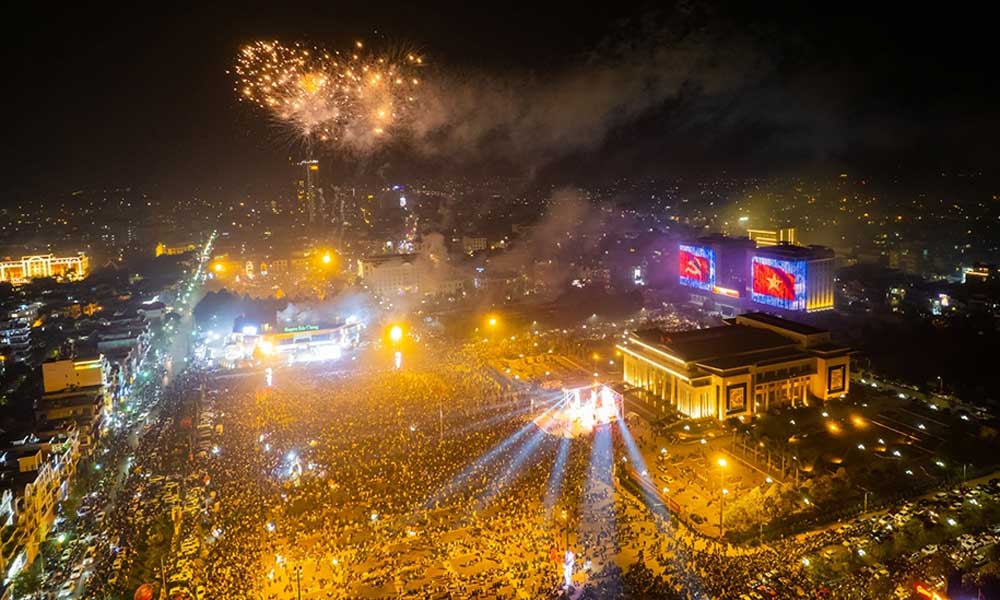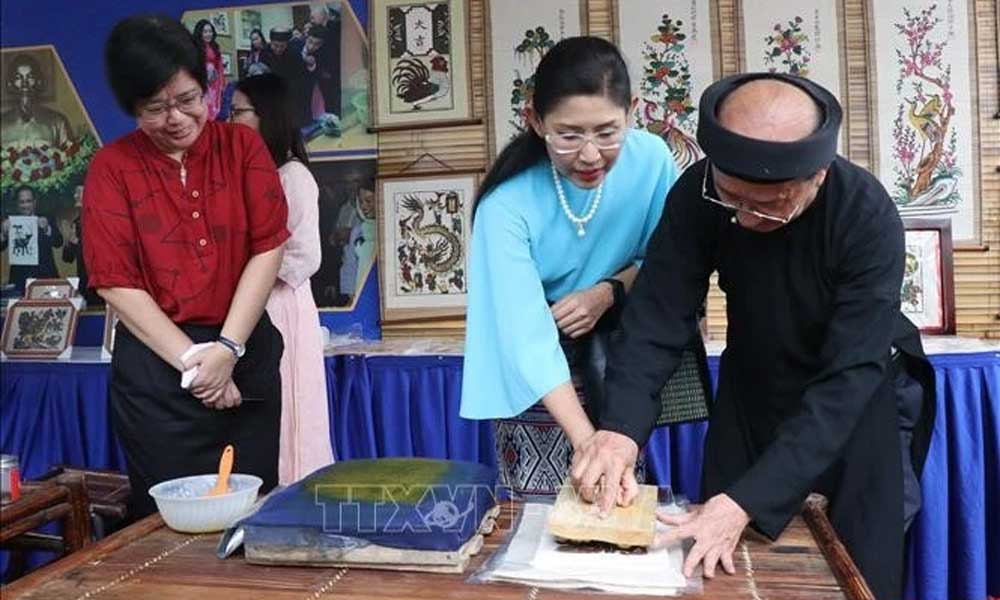Bac Ninh preserves ancient wells, keeping soul of countryside alive
BAC NINH - Currently, many rural villages in Bac Ninh province still preserve ancient wells. These wells are not merely sources of water; they also serve as cultural spaces, places that foster community bonds and reflect the communal spirit and traditions of ancient Vietnamese life.
Across the province, dozens of old wells remain, particularly nearly 20 square wells located in communes such as Tan Yen, Nha Nam, Phuc Hoa, Quang Trung, and Xuan Cam.
 |
|
A team from Bac Ninh Museum No. 1 surveys a square well in Nha Nam commune. |
These wells are centuries old and most still retain their ancient charm and cool, clear water. They are vivid remnants that showcase the ingenious water extraction techniques of the ancestors, while preserving rich cultural values and traditions closely tied to village life.
Square wells in Bac Ninh are typically built with laterite, green stone, or Bat Trang bricks. In some places, additional reinforcements are made using ironwood or pinewood logs that have been soaked for centuries to prevent rotting.
The rims and walls of the wells are precisely squared, with flat stone bases that give a sense of sturdiness. The well dimensions vary — larger wells have square mouths measuring about 2 metres across, with inner widths of 1 to 1.2 metres; smaller ones are about 1.3 metres in diameter and nearly 1 metre wide.
Though not very deep, typically between 5 to 10 metres, these square wells rarely run dry.
These wells are often located at the village entrance, near communal houses, pagodas, or rice fields — convenient for daily water use and closely tied to communal spiritual life.
Beyond their practical purpose, square wells have deep feng shui significance. In folklore, wells are considered sources of vital energy and blessings for the village.
The square shape symbolises the earth; and combined with water, it represents life and fertility. Wells are seen as connections between heaven, earth, the gods, and people - nurturing generations with their pure water. Therefore, they are revered, preserved, and used in ceremonial rituals.
A notable example is the square well in Chieng village (Nha Nam commune), the largest among surveyed square wells in the province. Located near a communal house and shrine, it creates a sacred space. The well's bottom is lined with ironwood and cobblestones for stability.
According to village elders, in the past, on full moon and new moon days, residents would gather at the communal house and the well for rituals, taking water for offerings and incense burning. The well is considered the village’s “dragon vein,” as it never runs dry.
In the same commune lies the Nguon Pagoda well, with a rim and walls built of slate and a lining of laterite stones, with its water clear year-round. Artifacts from the Tran dynasty have been found in this area, further enhancing its historical value.
In Quang Trung commune, Dau well has walls built with large stones and ironwood and remains relatively intact. Do well, although its mouth has been remodeled into a round shape, still has a square base with sturdy laterite lining.
Next to the well stands a “gan ga” stone pillar - a Linga symbol of the ancient Cham people, indicating a historical cultural exchange between Vietnamese and Cham civilisations.
Recently, in Hac Lam village (Xuan Cam commune), during the dredging of a village pond, locals discovered an ancient square well with spirally arranged wooden walls - a rare structure in the Red River Delta.
This is a type of vertical spring well with always-clear water, reflecting advanced well-digging techniques from centuries past. The wooden reinforcements provide both structural strength and potential water filtration, preventing contamination.
According to researchers, square wells are not typically common in the Red River Delta, but more frequently found in central Vietnam.
Today, although tap water and drilled wells are available in every village, dozens of ancient square wells in the province continue to be preserved as an integral part of the rural cultural landscape.
Preserving these square wells is not just about maintaining old structures - it is about protecting the cultural heritage of village life, safeguarding its spirit, customs, and communal bonds that have defined generations.
 Bắc Ninh
Bắc Ninh














Reader's comments (0)